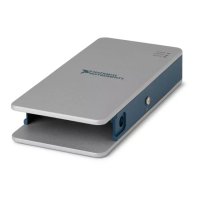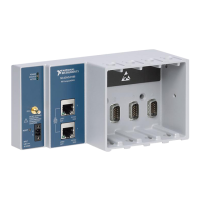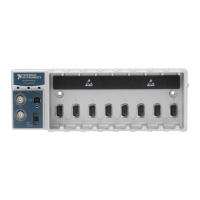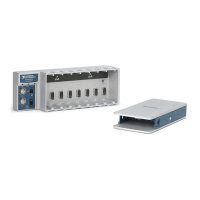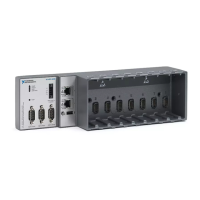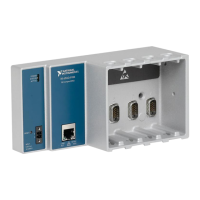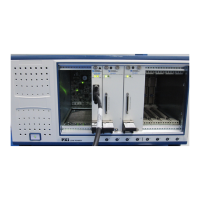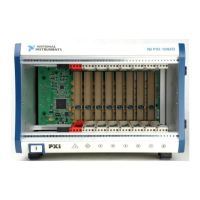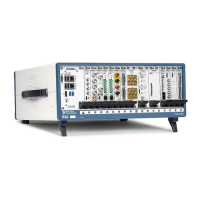© National Instruments | 3-3
cDAQ-9185/9189 User Manual
AI Convert Clock Signal Behavior For Analog Input
Modules
Refer to the Scanned Modules, Simultaneous Sample-and-Hold Modules, Delta-Sigma Modules,
and Slow Sample Rate Modules sections for information about the AI Convert Clock signal and
C Series analog input modules.
Scanned Modules
Scanned C Series analog input modules contain a single A/D converter and a multiplexer to
select between multiple input channels. When the cDAQ Module Interface receives a Sample
Clock pulse, it begins generating a Convert Clock for each scanned module in the current task.
Each Convert Clock signals the acquisition of a single channel from that module. The Convert
Clock rate depends on the module being used, the number of channels used on that module, and
the system Sample Clock rate.
The driver chooses the fastest conversion rate possible based on the speed of the A/D converter
for each module and adds 10 µs of padding between each channel to allow for adequate settling
time. This scheme enables the channels to approximate simultaneous sampling. If the AI Sample
Clock rate is too fast to allow for 10 µs of padding, NI-DAQmx selects a conversion rate that
spaces the AI Convert Clock pulses evenly throughout the sample. NI-DAQmx uses the same
amount of padding for all the modules in the task. To explicitly specify the conversion rate, use
the ActiveDevs and AI Convert Clock Rate properties using the DAQmx Timing property
node or functions.
Simultaneous Sample-and-Hold Modules
Simultaneous sample-and-hold (SSH) C Series analog input modules contain multiple A/D
converters or circuitry that allows all the input channels to be sampled at the same time. These
modules sample their inputs on every Sample Clock pulse.
Delta-Sigma Modules
Delta-sigma C Series analog input modules function much like SSH modules, but use A/D
converters that require a high-frequency oversample clock to produce accurate, synchronized
data. Some delta-sigma modules in the cDAQ chassis automatically share a single oversample
clock to synchronize data from all the modules that support an external oversample clock
timebase when they all share the same task. (DSA modules are an example). The cDAQ chassis
supports a maximum of two synchronization pulse signals configured for your system. This
limits the system to two tasks with different oversample clock timebases.
The oversample clock is used as the AI Sample Clock Timebase. The cDAQ chassis supplies
10 MHz, 12.8 MHz, and 13.1072 MHz timebases from which software automatically selects
based on the modules in the task. When delta-sigma modules with different oversample clock
frequencies are used in an analog input task, the AI Sample Clock Timebase can use any of the
available frequencies; by default, the fastest available is used. The sample rate of all modules in
the task is an integer divisor of the frequency of the AI Sample Clock Timebase.
Artisan Technology Group - Quality Instrumentation ... Guaranteed | (888) 88-SOURCE | www.artisantg.com
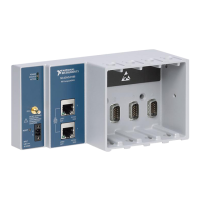
